10 easy ways to slash 300 calories a day
Drink your beer. Eat your pizza. You won't suspect a thing.

Want to cut calories without giving up the foods you love? Armed with crucial information and simple substitutions, you can slash your daily intake—and never feel like you're depriving yourself.
Each of the following tips saves at least 50 calories; choose any six to cut 300 calories from your diet, daily. Space them throughout your day, and you won't suspect a thing.

Steer clear of high-ABV beer
Want beer without the belly? Generally speaking, beers with lower alcohol content, or alcohol by volume (ABV), have fewer calories than those with higher ABVs. For example, a 12-ounce bottle of Molson XXX has a 7.3 percent ABV and around 200 calories. A 12-ounce serving of Guinness, with a 4.2… Show More
Want beer without the belly? Generally speaking, beers with lower alcohol content, or alcohol by volume (ABV), have fewer calories than those with higher ABVs. For example, a 12-ounce bottle of Molson XXX has a 7.3 percent ABV and around 200 calories. A 12-ounce serving of Guinness, with a 4.2 percent ABV, has only 125 calories. Light beers usually have very low ABVs, comparatively, which is part of what keeps the calorie count down.
There are exceptions, of course. Calorie counts can differ by brand, even if the ABVs are the same. Twelve ounces of Sam Adams Boston Lager, with a 4.9 percent ABV, has about 180 calories. A similarly sized Sapporo Premium, also with 4.9 percent ABV? Just 140 calories. Don't fret, though; if you're truly concerned about hitting the bar, calorie counts are readily available online.
Show Less

Use less cheese, please
A single 1-ounce piece of Swiss, provolone, muenster or American deli cheese has around 100 calories. Instead of two or three slices on your sandwich, cut back to one or two. You'll get the same flavor for a fraction of the calories.
Related: 1/2 cup of shredded cheddar cheese is about 220 calories.… Show More
A single 1-ounce piece of Swiss, provolone, muenster or American deli cheese has around 100 calories. Instead of two or three slices on your sandwich, cut back to one or two. You'll get the same flavor for a fraction of the calories.
Related: 1/2 cup of shredded cheddar cheese is about 220 calories. Cut 2 tablespoons from that, you'll save 55 calories or so—and still enjoy all the cheesy goodness.
Show Less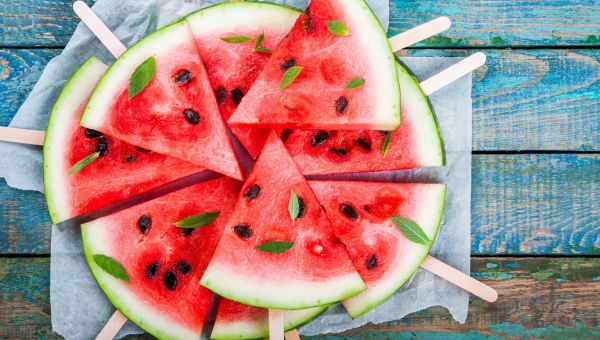
Choose fruit carefully
Whether you're trying to watch your weight or just want to hit the recommended daily serving, eating fruit is a good idea. But if you'd like to slash calories, pay attention to the type and size of fruit you choose. Here's why:
- A small orange has about 45 calories, compared to 120 calories in a … Show More
Whether you're trying to watch your weight or just want to hit the recommended daily serving, eating fruit is a good idea. But if you'd like to slash calories, pay attention to the type and size of fruit you choose. Here's why:
- A small orange has about 45 calories, compared to 120 calories in a large banana.
- One cup of watermelon is around 45 calories; 1 cup of seedless red or green grapes is about 105 calories.
- One large nectarine is about 70 calories. One mango? Over 200 calories.
Watch out for any dried and sweetened fruit or pre-sliced fruit packed in syrup or juice, which often have more calories than eating whole fruits.
Show Less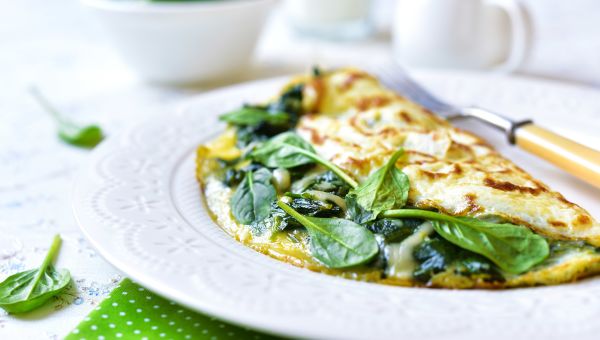
Be egg-cellent
Instead of a three-egg omelet or three scrambled eggs, which clock in around 220 calories for the eggs alone, try this: keep one whole egg, and substitute the other two for egg whites. You'll save at least 100 calories.
Egg whites are usually good swaps in basic baking, too. Look for recipes that… Show More
Instead of a three-egg omelet or three scrambled eggs, which clock in around 220 calories for the eggs alone, try this: keep one whole egg, and substitute the other two for egg whites. You'll save at least 100 calories.
Egg whites are usually good swaps in basic baking, too. Look for recipes that ask for them explicitly or experiment yourself by using two egg whites for one whole egg in cakes and quickbreads. One caveat: don't try it in recipes heavily dependent on egg yolks, like lemon curd. You might not like the results.
Oh, and don't believe the myth that all of an egg's protein is in the yolk. The white contains more than half.
Show Less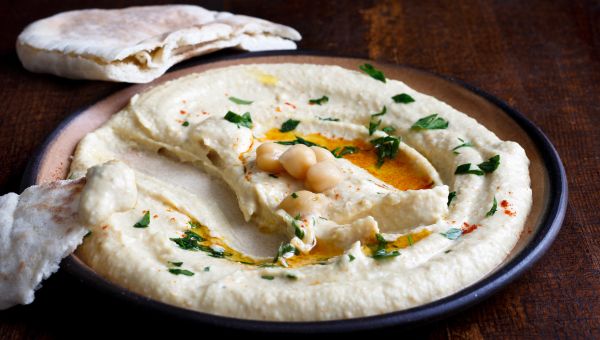
Say no to mayo
Mayonnaise, that omnipresent sandwich spread and salad filler, has around 90 calories per tablespoon, thanks mostly to its oil and egg content. Instead of slathering a glob of it on your sandwich, try a tablespoon of Dijon mustard (10-15 calories), hummus (25 calories), mashed avocado (23 calories)… Show More
Mayonnaise, that omnipresent sandwich spread and salad filler, has around 90 calories per tablespoon, thanks mostly to its oil and egg content. Instead of slathering a glob of it on your sandwich, try a tablespoon of Dijon mustard (10-15 calories), hummus (25 calories), mashed avocado (23 calories) or Greek yogurt (10-15 calories).
Show Less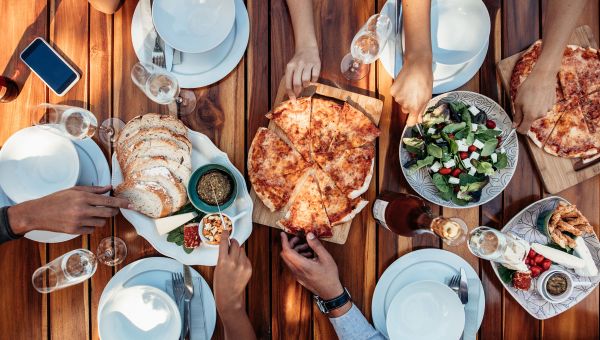
Pick pizza wisely
All pizzas are not created equal. A slice from a chain restaurant may be thicker or thinner, smaller or larger, and made with slightly different ingredients than one from the mom-and-pop place around the corner. Still, no matter what style (deep dish, thin crust, etc.) or brand you prefer,… Show More
All pizzas are not created equal. A slice from a chain restaurant may be thicker or thinner, smaller or larger, and made with slightly different ingredients than one from the mom-and-pop place around the corner. Still, no matter what style (deep dish, thin crust, etc.) or brand you prefer, following a few rules can usually be a calorie saver.
Generally speaking, plain and veggie-topped pizzas will have fewer calories than those with sausage, pepperoni, buffalo chicken, bacon or meatballs. Thin-crust pizzas will have fewer calories than regular, thick or deep-dish style pizzas, as well.
For example, according to the USDA:
- One slice of thin-crust 14" cheese pizza is 230 calories.
- One slice of thin-crust 14" sausage pizza is 282 calories.
- One slice of thick-crust 14" cheese pizza is 312 calories.
- Once slice of thick-crust 14" sausage pizza is 358 calories.
So, choose a thin-crusted plain pizza when you can. If you can't bear giving up your sausage, split the meat from one piece on two slices—same flavor, fewer calories.
Show Less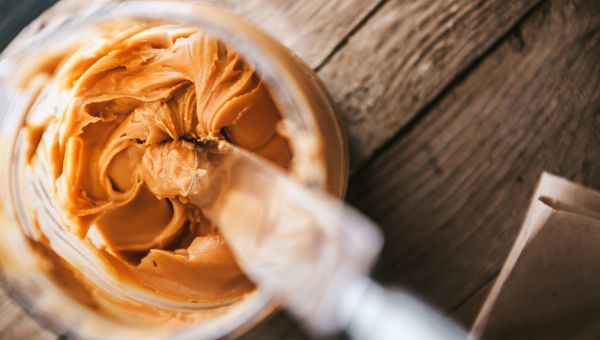
Pull back on peanut butter
Packed with protein, eminently affordable and available dang near everywhere, there's a reason peanut butter is a fixture in American pantries. That said, it's also calorie-dense, packing around 190 in just two tablespoons. Almond, cashew and sunflower spreads all have similar calorie counts.… Show More
Packed with protein, eminently affordable and available dang near everywhere, there's a reason peanut butter is a fixture in American pantries. That said, it's also calorie-dense, packing around 190 in just two tablespoons. Almond, cashew and sunflower spreads all have similar calorie counts. Slashing just over a 1/2 tablespoon saves you 50 calories and still gives you plenty of PB to work with. Eat it in oatmeal, on celery sticks and of course, as part of your favorite sandwich.
Worried your love of peanut butter will prompt you to go beyond the recommended portion? Track the size of your meals. It helps you stay accountable and on track. Apps like Sharecare (available on iOS and Android) have trackers that allow you to record meal size and quality.
Show Less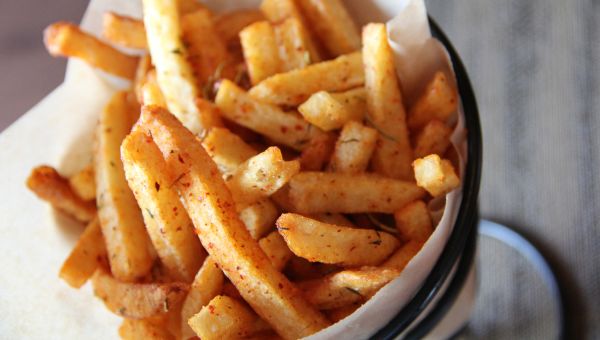
Let your French fries fly
This one's easy. A single McDonald's French fry is 5 calories. Give 10 to a friend and it's 50 calories off your tally. While calorie counts vary, removing 10 fries from any restaurant order will net double-digit—and sometimes triple-digit—calorie savings.
Better yet, get a smaller size to begin… Show More
This one's easy. A single McDonald's French fry is 5 calories. Give 10 to a friend and it's 50 calories off your tally. While calorie counts vary, removing 10 fries from any restaurant order will net double-digit—and sometimes triple-digit—calorie savings.
Better yet, get a smaller size to begin with or skip the fries altogether and opt for a salad or half a baked potato. At home, try a baked polenta, turnips or sweet potato fries recipe. Many places are now selling butternut squash fries as well—both fresh and frozen. Toss with a small amount of olive oil and your favorite herbs for a healthier side dish.
Show Less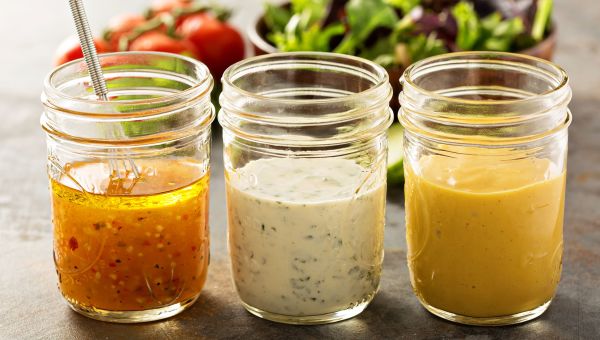
Make your salad dressing more efficient
A typical salad dressing serving size is 2 tablespoons. For ranch, French and blue cheese dressing, that comes out to around 140 or 150 calories. To knock that number down, try one of three things:
- Make your own dressing.
- Choose a naturally lighter dressing, like Italian (80-90 calories) or honey … Show More
A typical salad dressing serving size is 2 tablespoons. For ranch, French and blue cheese dressing, that comes out to around 140 or 150 calories. To knock that number down, try one of three things:
- Make your own dressing.
- Choose a naturally lighter dressing, like Italian (80-90 calories) or honey mustard (100 calories).
- Cut your serving size to 1 tablespoon and dress your salad more efficiently.
What do we mean by that last one? Well, when we make salad, we usually place the ingredients in our bowl and pour dressing on top, ensuring some lettuce leaves are drenched, while others remain virtually dry. To avoid this uneven distribution of dressing—and get a little flavor in every bite—place your dressing in the bottom of the bowl, add your salad on top and toss. If you make your own dressing, you can do it right in the bowl; it's one less dish to wash. Either way, it helps a little dressing go a long way.
It’s also not hard to make your own vinaigrette at home. Combine equal parts olive oil and vinegar in a mason jar (use more vinegar if you prefer a tangier dressing). Add in a small dollop of Dijon mustard, a squirt of honey and a pinch of salt and pepper. Then place a lid on it and shake it up. The dressing will keep well in the fridge and is open to endless variations—fresh herbs, lemon juice in place of vinegar or different fruit to sweeten it up.
Show Less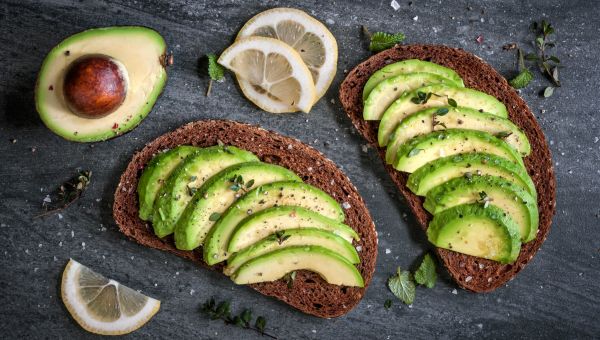
Ease up on avocado
Everybody loves avocado, right? The emerald fruit—yes, it's a fruit—is chock full of fiber, potassium, folate, vitamin K and healthy monounsaturated fats. It's also calorie-dense, thanks to that high fat content; one persea americana has between 230 and 290 calories. So, instead of using half an… Show More
Everybody loves avocado, right? The emerald fruit—yes, it's a fruit—is chock full of fiber, potassium, folate, vitamin K and healthy monounsaturated fats. It's also calorie-dense, thanks to that high fat content; one persea americana has between 230 and 290 calories. So, instead of using half an avocado on your toast (115 to 145 calories), use a little less than a third (77 to 97 calories). Odds are you won't miss the extra.
Bonus tip: making guacamole? Add chopped and seeded tomatoes to pad out the recipe. You'll stretch the recipe a lot further, and each tablespoon will contain substantially fewer calories.
Show Less
More On


video

article

slideshow


video


video
